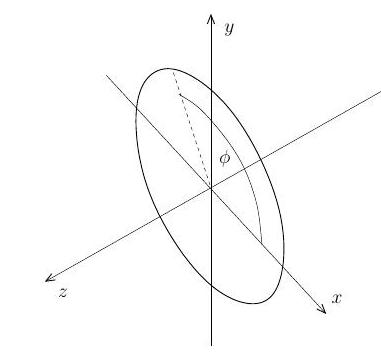| course |
course_year |
question_number |
tags |
title |
year |
Methods |
IB |
52 |
|
Paper 2, Section II, C |
2015 |
(i) The Laplace operator in spherical coordinates is
$$\vec{\nabla}^{2}=\frac{1}{r^{2}} \frac{\partial}{\partial r}\left(r^{2} \frac{\partial}{\partial r}\right)+\frac{1}{r^{2} \sin \theta} \frac{\partial}{\partial \theta}\left(\sin \theta \frac{\partial}{\partial \theta}\right)+\frac{1}{r^{2} \sin ^{2} \theta} \frac{\partial^{2}}{\partial \phi^{2}}$$
Show that general, regular axisymmetric solutions $\psi(r, \theta)$ to the equation $\vec{\nabla}^{2} \psi=0$ are given by
$$\psi(r, \theta)=\sum_{n=0}^{\infty}\left(A_{n} r^{n}+B_{n} r^{-(n+1)}\right) P_{n}(\cos \theta)$$
where $A_{n}, B_{n}$ are constants and $P_{n}$ are the Legendre polynomials. [You may use without proof that regular solutions to Legendre's equation $-\frac{d}{d x}\left[\left(1-x^{2}\right) \frac{d}{d x} y(x)\right]=\lambda y(x)$ are given by $P_{n}(x)$ with $\lambda=n(n+1)$ and non-negative integer $n$.]
(ii) Consider a uniformly charged wire in the form of a ring of infinitesimal width with radius $r_{0}=1$ and a constant charge per unit length $\sigma$. By Coulomb's law, the electric potential due to a point charge $q$ at a point a distance $d$ from the charge is
$$U=\frac{q}{4 \pi \epsilon_{0} d}$$
where $\epsilon_{0}$ is a constant. Let the $z$-axis be perpendicular to the circle and pass through the circle's centre (see figure). Show that the potential due to the charged ring at a point on the $z$-axis at location $z$ is given by

$$V=\frac{\sigma}{2 \epsilon_{0} \sqrt{1+z^{2}}} .$$
(iii) The potential $V$ generated by the charged ring of (ii) at arbitrary points (excluding points directly on the ring which can be ignored for this question) is determined by Laplace's equation $\vec{\nabla}^{2} V=0$. Calculate this potential with the boundary condition $\lim _{r \rightarrow \infty} V=0$, where $r=\sqrt{x^{2}+y^{2}+z^{2}}$. [You may use without proof that
$$\frac{1}{\sqrt{1+x^{2}}}=\sum_{m=0}^{\infty} x^{2 m}(-1)^{m} \frac{(2 m) !}{2^{2 m}(m !)^{2}}$$
for $|x|<1$. Furthermore, the Legendre polynomials are normalized such that $\left.P_{n}(1)=1 .\right]$
